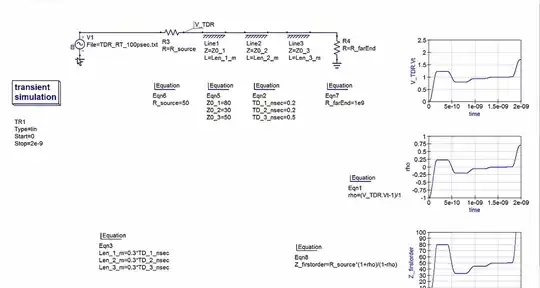I have read that TDR is problematic because if we have many transmission lines in series which cause discontinuity to the source resistance ,then the closer TL's will mask the reading of the far TL from the source, so is when the rise time of the source is larger the TL delay.
So what is the alternative to the TDR? what method is used to overcome those problems and see the impedance at every location of the system?
An example is shown in the picture below. We have 80 Ω, 30 Ω and 50 Ω transmission lines. The 80 Ω and 30 Ω t-lines create masking problem for reading the 50 Ω transmission line: -

https://ibb.co/LnZQ214
– ron398 Mar 14 '21 at 15:19